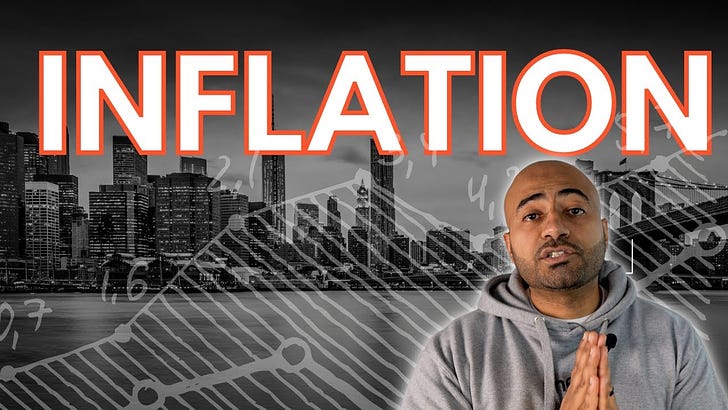You can’t talk to anyone these days without discussing prices of everyday things. You and I have felt the pain of inflation. Today, I would like to discuss some of the hidden consequences of inflation. Economics textbooks have list of things we should expect to experience when inflation hits, but what we will discuss today is not in most textbooks.
Inflation is at a 40 year high. The Federal Reserve Bank has been aggressive in increasing interest rates to help reduce spending and demand, and hopefully decreasing price growth. Although the growth in prices is slowing down, they remain much higher than they were pre pandemic. This is true for prices of essential food items, like eggs, which have increased 70% in the past year.
Inflation has hit our pockets, but it has hit some of us more than others and that is what I want to talk about today.
Why?
To understand why inflation impacts people differently we have to understand what inflation is, how it is measured, and the statistical concept of averages (mean).
How is inflation measured?
Inflation is typically measured by the Consumer Price Index (CPI). The CPI measures the change in the price of a basket of goods and services consumed by households. The percentage change in these indices over a certain period of time, such as a year, is used as a measure of inflation.
In the United States, the basket of goods used to calculate the Consumer Price Index (CPI) is defined by the Bureau of Labor Statistics (BLS). The basket includes a representative sample of goods and services that are commonly consumed by households. These goods and services are grouped into several categories, such as housing, food, transportation, and healthcare. Within each category, a specific set of items are chosen to represent the category as a whole. The specific goods and services included in the basket, and the weight given to each, are determined by surveys of consumer spending patterns. The BLS regularly reviews and updates the basket to ensure it remains representative of current consumer spending patterns.
The market basket used to be based on two years of data. However, the BLS has recently decided that the basket will be constructed using one year of data to allow changes in consumer spending habits to be reflected in the CPI data. February 2023, will be the first time the new methodology is implemented.
What is an Average?
Now that we know how the basket is represented, we can start to see why this might create problems. The basket represents the average consumer and their spending habits.
For instance in December 2020, the BLS defined the basket weights as
Housing: 42.1%
Food and beverages: 16.5%
Apparel: 3.1%
Transportation: 16.8%
Medical care: 7.2%
Recreation: 4.8%
Education and communication: 5.5%
Other goods and services: 4.9%
The CPI and inflation measures are representative for the average person. But what happens when your spending patterns are not average?!
You are not Average!
The proportion you spend on each of these categories might vary with age, income, race, location, and other demographic characteristics. For instance, for low income individuals, they might spend more of their income on housing and food, less on transportation and recreation. If inflation is higher for housing and food items, then the low income individual would be experience a higher inflation rate than the average person.
This is especially true, if consumers cannot substitute away from a category. For instance, if prices increase in recreation, we are more likely to avoid the price hikes by taking away spending from recreation. However, housing and food are necessities, and it is more difficult for us to shift our spending away from this bucket. Therefore some segments of our economy will experience higher level of inflation because they cannot avoid the higher prices, this is also known as inelastic demand.
Takeaway
A recent study by the Federal Reserve Bank of New York present disparities in inflation rates for different races and for different income levels. They find that there are differences in how we experience inflation and those differences vary over time.
Between 2020-2021, racial inflation disparities increased. So did inflation disparities relative to income. In this graph we see that for middle income individuals, inflation is much higher for the top 20%. This is due to differences in how much of our income we spend on each of these categories.
As we consider policies, it is important to recognize that how the economy affects different segments of our population may vary widely. Averages neglect to communicate the distribution and variance in experience. This is why I advocate for having diverse economists in our field, and policymakers with diverse experiences. We cannot shape our policies based on experiences of few segments of our economy.






Great insights, Dr. A!
Thanks for breaking it down in easy to understand ways.
Great post, Abdullah! I knew things in the basket were weighted but hadn't thought about disparate impacts by people with different rates. I am curious on the impact of housing inflation on rentals.
Is there some measure of typical lease lengths? I've always found it strange to hear talks about the impact of rent changes because I've only ever lived in college towns where leases are always a year long. I feel like that helps dampen some month-to-month inflationary impacts, but I know that shorter leases are more common. In a year like last year, would people on monthly or quarterly leases really have seen increases with each lease?